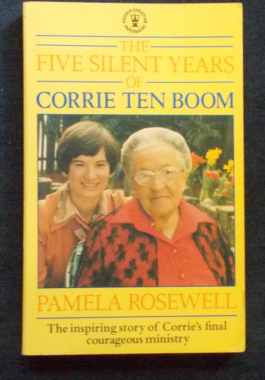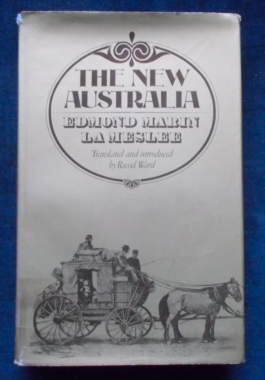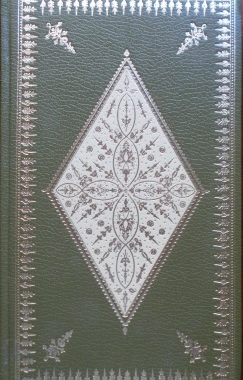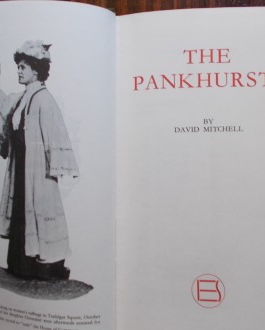-
 An Inquiry Into the Nature of Citizenship in the British Empire and Into the Mutual Relations of the Several Communities Thereof. In 1910 groups were formed in various centres in Canada, Australia, New Zealand and South Africa for studying the nature of citizenship in the British Empire. In the course of time, others were constituted in the United Kingdom; India and Newfoundland - and they all came to be known informally as The Round Table from the name of the quarterly review instituted by their members as a medium of mutual information on Imperial affairs. With black and white illustrations and all map inserts.
An Inquiry Into the Nature of Citizenship in the British Empire and Into the Mutual Relations of the Several Communities Thereof. In 1910 groups were formed in various centres in Canada, Australia, New Zealand and South Africa for studying the nature of citizenship in the British Empire. In the course of time, others were constituted in the United Kingdom; India and Newfoundland - and they all came to be known informally as The Round Table from the name of the quarterly review instituted by their members as a medium of mutual information on Imperial affairs. With black and white illustrations and all map inserts. -

 Australian Richard Hillary joined RAF Fighter Command’s 603 Squadron in July 1940, then based in Scotland and flying the new Supermarine Spitfire. On 27 August 1940 the squadron moved south to London, the epicentre of the Battle of Britain, and within a week Hillary had shot down five Messerschmitt 109s, becoming an ‘ace’. But on his last sortie he was shot out of the sky over Dungeness, the cockpit of his Spitfire became engulfed in flames and Hillary was grievously burned as he desperately tried to bale out. Hillary was soon to become the most famous patient of the RAF’s pioneering plastic surgeon, Archibald McIndoe, and member of his ‘Guinea Pig Club’. He would endure months of painful surgery in an attempt to repair the damage to his hands and face, and allow him to return to active duty. Originally published in 1942, just months before he died in a second crash, The Last Enemy recounts the struggles and successes of a young man in the Royal Air Force.
Australian Richard Hillary joined RAF Fighter Command’s 603 Squadron in July 1940, then based in Scotland and flying the new Supermarine Spitfire. On 27 August 1940 the squadron moved south to London, the epicentre of the Battle of Britain, and within a week Hillary had shot down five Messerschmitt 109s, becoming an ‘ace’. But on his last sortie he was shot out of the sky over Dungeness, the cockpit of his Spitfire became engulfed in flames and Hillary was grievously burned as he desperately tried to bale out. Hillary was soon to become the most famous patient of the RAF’s pioneering plastic surgeon, Archibald McIndoe, and member of his ‘Guinea Pig Club’. He would endure months of painful surgery in an attempt to repair the damage to his hands and face, and allow him to return to active duty. Originally published in 1942, just months before he died in a second crash, The Last Enemy recounts the struggles and successes of a young man in the Royal Air Force. -

Corrie Ten Boom was known and loved by millions for her book The Hiding Place which told how her family hid Jews from the Gestapo during the Nazi occupation of Holland. Her life launched Corrie into writing, travel and speaking of her experiences. Englishwoman Pamela Rosewell was Corrie's constant companion in the last years of her life. She describes the sheer energy and loving dedication which marked the final active years of Corrie's ministry and testifies to the practical love and concern Corrie inspired in others when strokes made communication hard and rendered her virtually immobile. This tribute will move and encourage the thousands who have come to love the courageous Corrie Ten Boom.
-

 Clune set out on New Year's Day, 1947, on what he calls a Marco Polo marathon, modern style. In his own breezy fashion he tells how he took the long journey from Sydney to London by air, but in easy stages - stopping long enough in each of the countries he visited to discover something of interest about it. His trip took him into 31 countries: Indonesia, Singapore, Malaya, Burma, India, Pakistan, Afghanistan, Balochistan, Bahrain Protctorate, Iraq, Iran, Trans-Jordan, Syria, Palestine, Egypt, Malta, Sicily, Corsica and France, just to name a few. Clune took black coffee - very strong and bitter - with the Shaikh of Bahrein; and when he was invited to a sumptuous repast (without knives or forks) in Afghanistan, he complimented his generous host in the for mally correct manner by belching loudly. In Afghanistan, he taught the tribesmento sing Waltzing Matilda and in Singapore, visited the prisoner-of-war camps, attended the war-trials, and even visited the prisons where he saw the Japanese officers who were condemned to die. Illustrated with maps and black and white photographs.
Clune set out on New Year's Day, 1947, on what he calls a Marco Polo marathon, modern style. In his own breezy fashion he tells how he took the long journey from Sydney to London by air, but in easy stages - stopping long enough in each of the countries he visited to discover something of interest about it. His trip took him into 31 countries: Indonesia, Singapore, Malaya, Burma, India, Pakistan, Afghanistan, Balochistan, Bahrain Protctorate, Iraq, Iran, Trans-Jordan, Syria, Palestine, Egypt, Malta, Sicily, Corsica and France, just to name a few. Clune took black coffee - very strong and bitter - with the Shaikh of Bahrein; and when he was invited to a sumptuous repast (without knives or forks) in Afghanistan, he complimented his generous host in the for mally correct manner by belching loudly. In Afghanistan, he taught the tribesmento sing Waltzing Matilda and in Singapore, visited the prisoner-of-war camps, attended the war-trials, and even visited the prisons where he saw the Japanese officers who were condemned to die. Illustrated with maps and black and white photographs. -
 Tommy Farr was one of Britain's most respected sportsmen and was arguably the finest heavyweight British boxer of all time. His life story is a true inspiration. From the extreme poverty of his childhood in Wales when he peddled goods from a handcart to his glory days in the boxing ring, his life was a battle. He left the mines and the fairground boxing booths to seek his fortune in London - where he had to fight to get fights. Never forgetting his Welsh roots we went on the enjoy the high life in London and New York where he was mobbed by fans and courted by celebrities. After his retirement to Brighton he faced bankruptcy from property ventures and vetting businesses and at the age of 37 he was forced into an astonishing comeback to support his beloved family. Anyone can make it once - but to make it twice in the rough and tumble world of boxing is a true achievement. Illustrated with black and white photos.
Tommy Farr was one of Britain's most respected sportsmen and was arguably the finest heavyweight British boxer of all time. His life story is a true inspiration. From the extreme poverty of his childhood in Wales when he peddled goods from a handcart to his glory days in the boxing ring, his life was a battle. He left the mines and the fairground boxing booths to seek his fortune in London - where he had to fight to get fights. Never forgetting his Welsh roots we went on the enjoy the high life in London and New York where he was mobbed by fans and courted by celebrities. After his retirement to Brighton he faced bankruptcy from property ventures and vetting businesses and at the age of 37 he was forced into an astonishing comeback to support his beloved family. Anyone can make it once - but to make it twice in the rough and tumble world of boxing is a true achievement. Illustrated with black and white photos. -
 This biographical volume covers the lives great stage actors of the period 1740 - 1914 in six critical yet easy-to-read essays: David Garrick; John Kemble; Edmund Kean; W.C. Macready; Sir Henry Irving and Sir Johnston Forbes-Robertson. The author did not attempt to solve the question of what makes a great actor, but instead offers six kinds of greatness. A book for anyone interested in the magic, glamour and history of the stage. Illustrated with black and white sketches and photographs.
This biographical volume covers the lives great stage actors of the period 1740 - 1914 in six critical yet easy-to-read essays: David Garrick; John Kemble; Edmund Kean; W.C. Macready; Sir Henry Irving and Sir Johnston Forbes-Robertson. The author did not attempt to solve the question of what makes a great actor, but instead offers six kinds of greatness. A book for anyone interested in the magic, glamour and history of the stage. Illustrated with black and white sketches and photographs. -
 Benson looks back over a long and interesting life in this last volume of his memoirs: his youth as the son of Queen Victoria's Archbishop of Canterbury; his family and London snobs, literary sybils and the Lotus Eaters of Capri - where he shared a house with John Ellingham Brooks and Somerset Maugham and where his neighbours included Norman Douglas, Compton Mackenzie, Axel Munthe and Maxim Gorki. He evokes the little world of Rye, immortalised in Mapp and Lucia, where he gloried in the splendid robes of Lord Mayor in 1934, happy to end as "a big fish in a small pond". Final Edition is Benson's own final tribute to those he loved, completed ten days before his death in 1940. Benson wrote biographies, essays, memoirs and fiction, including such novels as Paying Guests and the Mapp and Lucia series, comical novels and ghost stories.
Benson looks back over a long and interesting life in this last volume of his memoirs: his youth as the son of Queen Victoria's Archbishop of Canterbury; his family and London snobs, literary sybils and the Lotus Eaters of Capri - where he shared a house with John Ellingham Brooks and Somerset Maugham and where his neighbours included Norman Douglas, Compton Mackenzie, Axel Munthe and Maxim Gorki. He evokes the little world of Rye, immortalised in Mapp and Lucia, where he gloried in the splendid robes of Lord Mayor in 1934, happy to end as "a big fish in a small pond". Final Edition is Benson's own final tribute to those he loved, completed ten days before his death in 1940. Benson wrote biographies, essays, memoirs and fiction, including such novels as Paying Guests and the Mapp and Lucia series, comical novels and ghost stories. -

Originally published in 1883, La Meslee saw what Australian and English eyes missed or merely took for granted about the new colony. Melbourne Cup Day; a politician's maiden speech; a coach journey along what is now the Hume Highway; the meeting of two French Counts in Townsville - all these events and more are brought to life again, presenting a fascinating picture of a developing society full of vitality and brash self-confidence. Illustrated with beautiful black and white sketches.
-

 Mrs Emmeline Pankhurst, with her daughters Christabel, Sylvia and Adela were the central figures of the Suffragette movement who fought for votes for women in the early years of the 20th century. Civil disobedience, direct action, mass meetings, hunger strikes and vandalism were all employed to shout the message of equality. A possible apocryphal story is that of a young suffragette who was distressed by the growing violence on behalf of the Cause, and who came to Mrs. Pankhurst crying, "What shall we do? What shall we do?" The reply? "Put your faith in God, my dear. She will help us."
Mrs Emmeline Pankhurst, with her daughters Christabel, Sylvia and Adela were the central figures of the Suffragette movement who fought for votes for women in the early years of the 20th century. Civil disobedience, direct action, mass meetings, hunger strikes and vandalism were all employed to shout the message of equality. A possible apocryphal story is that of a young suffragette who was distressed by the growing violence on behalf of the Cause, and who came to Mrs. Pankhurst crying, "What shall we do? What shall we do?" The reply? "Put your faith in God, my dear. She will help us."


